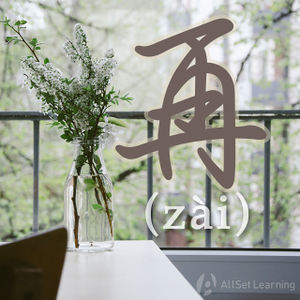Difference between revisions of "Expressing "again" in the future with "zai""
| Line 37: | Line 37: | ||
</div> | </div> | ||
| − | == 再 as " | + | == 再 as "another" or "some more" == |
The English word "another" is often avoided altogether by using 再. | The English word "another" is often avoided altogether by using 再. | ||
| Line 51: | Line 51: | ||
</div> | </div> | ||
| + | Examples: | ||
| + | |||
| + | <div class="liju"> | ||
| + | |||
| + | * 你 <em>再</em> 给 我 一点 钱。 | ||
| + | * 我们 <em>再</em> 给 她 点 时间 。 | ||
| + | * 她 想 <em>再</em> 吃 点 冰淇淋 。 | ||
| + | |||
| + | </div> | ||
== 再 as "continuous action" == | == 再 as "continuous action" == | ||
Revision as of 07:26, 21 February 2013
-
Level
-
Similar to
- Expressing "again" in the past with "you" (B1)
- Expressing "the other" with "lingwai" (B1)
- Sequencing with "xian" and "zai" (B1)
- Comparing "zai" and "you" (B2)
- Expressing "never again" with "zai ye bu" (B2)
- Expressing "over and over again" with "zaisan" (B2)
- Expressing a last chance with "zaibu... jiu..." (B2)
- Expressing "even so" with "zaibu... ye..." (C1)
-
Used for
-
Keywords
While 又 is used for "again" in the past, 再 is used for "again" in the future. That is, 再 is used when something has happened once and it will happen again.
Contents
再 as "Again"
The basic structure for using the future "again" is:
Subject + 再 + Verb + Object
Some examples:
- 再 说 一次 吧。
- 你 不 要 再 迟到。
- 我 下 次 再 来。
再 as "And then"
A usage that feels sort of related but deserves separate mention is the use of 再 to mean "and then." It is often preceded by 先 when giving clear sequential orders ("first do this... then do this..."), but it can also appear by itself to mean "and then."
The examples:
- 我们 先 吃饭 再 谈。
- 你 先 找 工作 再 考虑 买 房子。
- 我们 吃 了 饭 再 去。
再 as "another" or "some more"
The English word "another" is often avoided altogether by using 再.
Examples:
- 你 再 给 我 一 张 纸。
- 我们 再 找 一 个 人 吧。
- 她 想 再 做 一 个 新 的 作品。
Examples:
- 你 再 给 我 一点 钱。
- 我们 再 给 她 点 时间 。
- 她 想 再 吃 点 冰淇淋 。
再 as "continuous action"
Here 再 is similar to the English "continually" or "keep going/doing".
Examples:
- 时间 还 早,你们 再 玩 一会儿 吧。
- 再 找 找,找 不 到 我们 就 回去。
- 我 想 再 睡 会儿,太 困 了。
See also
Sources and further reading
Books
- Integrated Chinese: Level 2, Part 1 (pp. 157) →buy
- New Practical Chinese Reader 3 (新实用汉语课本3) (pp. 202) →buy



